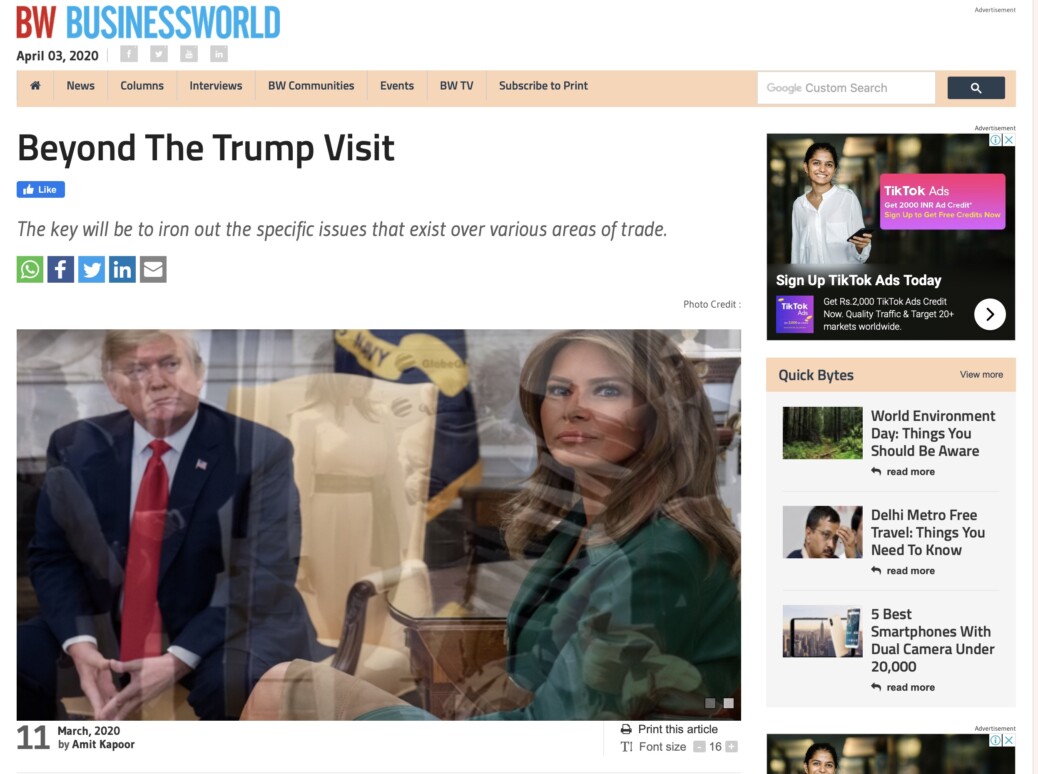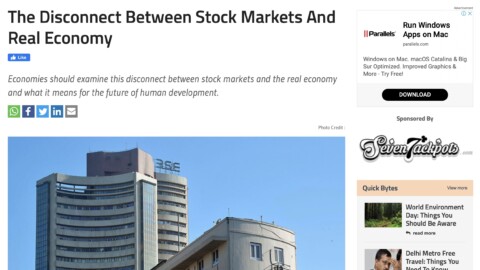During the seven decades of independence, India’s relationship with the United States has always been complicated. Before the new millennium, the cold war dynamics and India’s nuclear ambitions dictated the individual leanings of both the nations. But since Clinton’s visit to India in 2000, economics has been the defining feature of the relationship. The rise of the Indian economy post-liberalisation and its unique position in Asia to counterbalance China’s dominance places it in a favourable light from the US perspective. However, the complicated nature of the relationship has not yet resolved itself.
Donald Trump’s visit to India came during the time of some hot and cold trade-related negotiations between the two nations, which are yet to lead to a concrete outcome. Trump has been quite vocal about his stance concerning India and has continuously bashed the country as the ‘tariffs king.’ In his first address to the US Congress in March 2017, Trump singled out India for charging 100 per cent tariffs on Harley-Davidson motorcycles. He followed this by raising the import duty on Indian aluminium and steel products and also stripped India of the special status that was granted to some developing nations, which gave them preferential market access to the United States. India has also retaliated by raising import duties on various American products.
Even after two years of constant negotiations, the ensuing animosity has prevented the two countries from achieving a middle ground. A higher degree of cooperation for trade will be beneficial for both nations, and it was encouraging to see Trump expressing optimism of reaching a trade deal by the end of the year. Having India as a trade partner not only provides the US with a vast market that has immense potential to grow but also a strategic footing in Asia that has become especially necessary given the growing Chinese aspirations to establish its hegemony in the region.
On the other hand, India also has a lot to gain by resolving the trade impasse. Firstly, it will help the country improve the current economic landscape, which is marred by low growth and falling investment levels. A trade deal with the US will convey a positive signal to foreign investors who have become wary of the Indian markets as evidenced in foreign investment as a percentage of GDP registering to a decade low of 1.1 per cent in 2018-19.
Secondly, with American firms moving out of China and looking for options to manufacture in other developing countries, India has a unique opportunity to benefit from the shift that might not come in the near future again. So, a robust trade relationship with the US might act as a timely catalyst to attract such firms towards India.
Finally, as India chose to stay away from multilateral efforts in Asia like the Regional Comprehensive Economic Partnership (RCEP) and China’s Belt Road Initiative, exclusive trade agreements with developed economies might give it a much-required shot in the arm. Therefore, a possible trade deal will be a win-win situation for both nations.
There is no denying that a healthy trading partnership is crucial for both nations. While the US became India’s largest trading partner after edging ahead of China, the latter was the ninth-largest trading partner of goods for the US in 2018. Over the course of this year, the key will be to iron out the specific issues that exist over various areas of trade. And fortunately, the leaders of both nations share a sense of respect and camaraderie despite their differences over their commitments to their citizens. It is time that the countries leverage their relationship to extend the same approach towards trade.
The article was published with Business World on April 3, 2020.
























